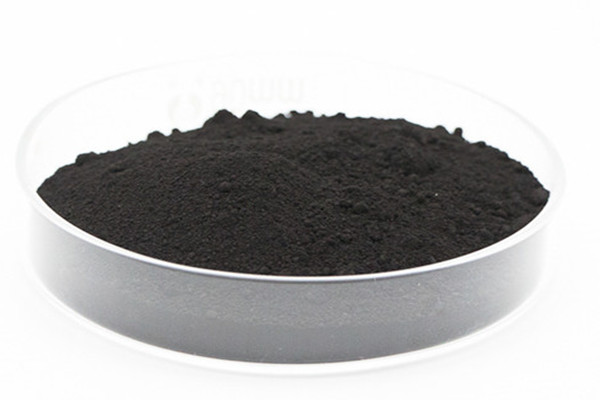
TR-202 Zinc Butyl Octyl Primary Alkyl Dithiophosphate

TR-EPC02 Ethylene-Propylene Copolymer

Lithium 12-Hydroxystearate Lithium Grease Lithium Based Grease

Graphene Best Oil Additive Engine Oil additive

Graphite Powder Graphite Lubricant Dry Graphite Lubricant

MoS2 Friction Modifier Molybdenum Disulfide
Graphite is a traditional solid lubricating material. Due to its special layered crystal structure, graphite material has good lubricating properties. As early as the 1950s, many graphite lubrication products have been developed one after another. For example, the world-famous Leica camera made in Germany used graphite powder as the lubricating material for mechanical parts. In the 1960s, my country also produced bronze oil-impregnated graphite bearings. In recent years, the domestic "Chikai" brand of energy-saving antifriction king additives and "Medron" series lubricants have also come out. Many studies and practices have shown that graphite used in lubricating oil has huge economic benefits and has many advantages of its own. With the development of science and technology and the deepening of scientific research, graphite lubricating materials have been extended to appear in the form of graphite derivatives, such as flake nano graphite, expanded graphite, fluorinated graphite, and elemental or compound intercalated graphite. This article comprehensively discusses the types, dispersion stability and lubricating effect of graphite lubricant additives, and provides references for the development and application of new graphite lubricant materials.

Influencing factors of graphite lubrication effect
Graphite particle size
The lubrication performance of graphite is affected by the particle size. Some scholars have shown that graphite powder with an average particle size of 4~5μm will produce a good lubricating effect, which can minimize the friction and wear of the specimen. However, more scholars have shown that controlling the average particle size below 0.5 µm is the key to the stable suspension of graphite in lubricating oil and also the condition for exerting lubricating performance. Graphite particles are too large to enter between the friction pairs, and cannot isolate and hinder the contact between the two friction surfaces, thus affecting the lubrication performance. However, it is obvious that if the graphite particles are too small to severely damage the graphite layered crystal structure, the friction reduction mechanism of the graphite sheet slip will also be lost, and the graphite lubrication effect is also poor. Therefore, the proper size of graphite particles is the key to graphite's lubricating effect.
The structure of graphite
The structure of graphite is one of the factors affecting the lubricating effect of graphite. Different graphite structures determine different types of graphite. It has not been reported so far that the lubricating effect of expanded graphite, fluorinated graphite, graphite intercalation compound and flake nano-graphite has been compared. It can be seen that under the condition of proper graphite particle size, different graphite types have their own optimal lubricating environment, which is difficult to compare. For example, expanded graphite has a strong absorption capacity and enrichment effect, and it can be mixed with extreme pressure additives to achieve the best effect; when the F/C ratio of fluorinated graphite reaches 1.0, the wear resistance life reaches the best value; and the temperature determines the graphite intercalation The degree of deintercalation of the compound; some scholars have pointed out that as the graphite diameter-to-thickness ratio increases, the specific wear of the lubricated material decreases significantly. It can be seen that the diameter-to-thickness ratio affects the lubricating effect of flake nano-graphite.
External environment
The particle size and structure of graphite are the internal factors that determine the lubricating effect of graphite, and the external environment is the external cause of the lubricating effect of graphite. As early as the 1940s, Robert proposed that humidity is an important factor affecting the lubrication effect of graphite. Water vapor and other small molecules can adsorb on the crystal edges of graphite and invade along the dissociation surface (interlayer), thereby reducing the surface energy of the graphite layer. It makes it easier for graphite to adsorb and form a film on the friction surface, thereby improving the lubricating effect. Bowden et al. also proposed that the friction coefficient of graphite under vacuum conditions increased significantly. Once air was introduced, the friction coefficient decreased rapidly. Therefore, improving the environmental medium of graphite-based lubricating materials is also the key to more effective graphite lubricity. Graphite and graphite derivatives have been widely used in lubricating oil additives and other lubrication fields due to their own good lubrication advantages. However, it is worth noting that the preparation process of ultra-fine and high-purity graphite still requires technological breakthroughs. Graphite nanoization and high-purity industrial production of graphite without sulfur and chlorine will be the future development trend of graphite; at the same time, with the development of technology, the development of new graphite derivative materials such as hollow nanometer will also provide excellent graphite lubrication The agent provides the material basis. It is believed that new graphite lubricating materials will continue to play a more important role for industrial lubrication.
Infomak is dedicated to the technology development of special oil additives, combined the Technology of nanomaterials developed dry lubricant and oil additives two series. Our products can significantly improve the performance of lubricating oil, improve energy efficiency, effectively protect the lubrication device and extend the oil change cycle, which can satisfy the lubrication oil constantly upgrading for high-end engine oil additives. Contact us.




